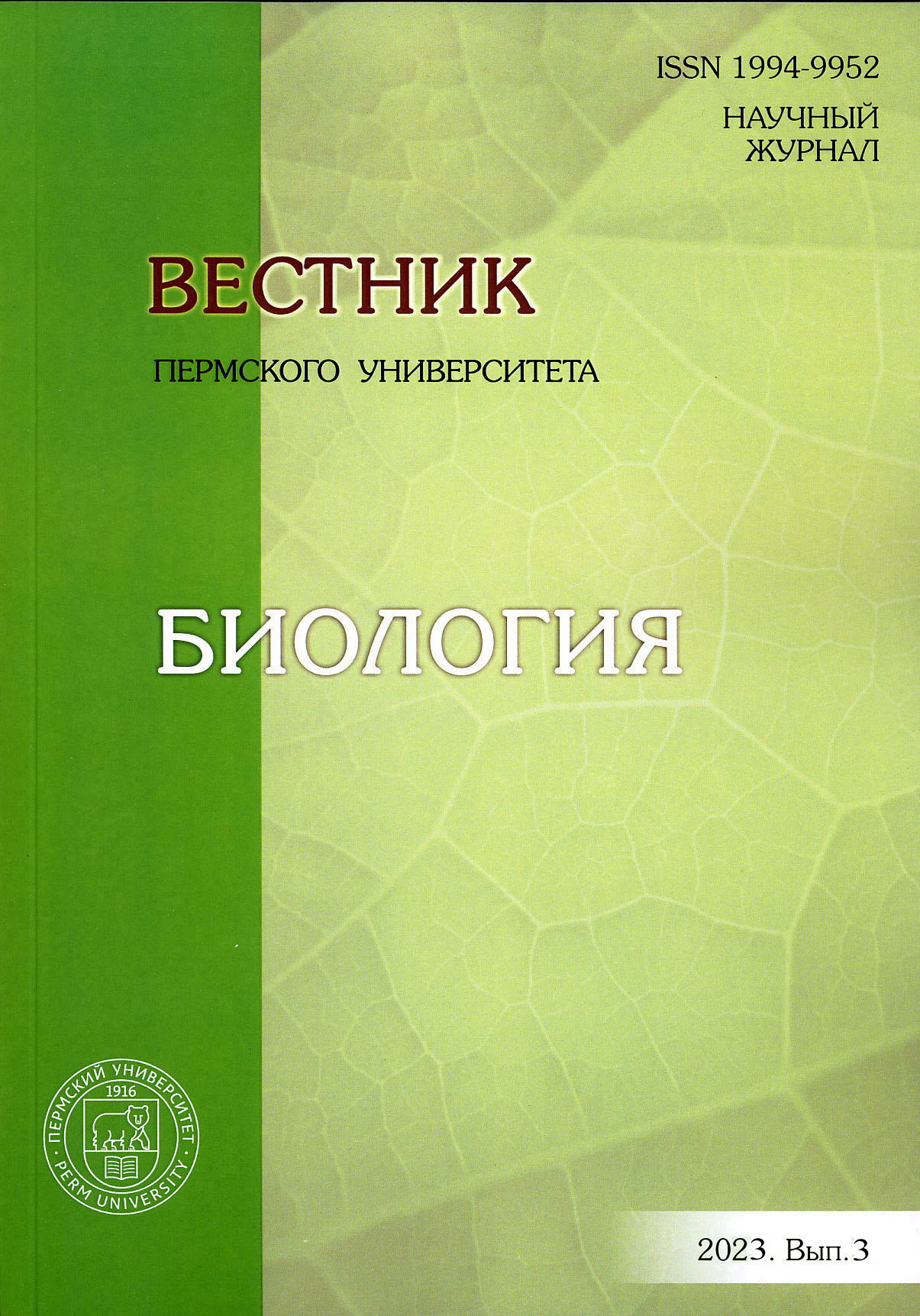Antibacterial activity of extracts from the flowers of the double-feathered cosmea (Cosmos bipinnatus Cav.) in relation to some clin-ical isolates
Main Article Content
Abstract
Article Details
References
Государственная фармакопея Российской Федерации / МЗ РФ. 14 изд. М., 2018. Т. 1. 1814 с.
Навашин С.М., Фомин И.П. Справочник по антибиотикам. М.: Медицина, 1974. 415 с.
Сибирцев В.С., Нечипоренко У.Ю. Методика оптико-электрохимического микробиологического те-стирования в применении к сравнительному анализу пребиотических и антимикробных свойств различ-ных растительных экстрактов // Вестник Пермского университета. Сер. Биология. 2021. Вып. 1. С. 26–38. DOI: https://doi.org/10.17072/1994-9952-2021-1-26-38.
Botsaris A.S. Plants used traditionally to treat malaria in Brazil: the archives of Flora Medicinal // J. Eth-nobiol. Ethnomed. 2007. Vol. 3, номер статьи 18. DOI: 10.1186/1746-4269-3-18.
Kaisoon O., Konczak I., Siriamornpun S. Potential health enhancing properties of edible flowers from Thailand. // Food Research International. 2012. Vol. 46, № 2. P. 563–571. DOI:10.1016/j.foodres.2011.06.016.
Malaka R. et al. Green synthesis of silver nanoparticles using Cosmos sulphureus and evaluation of their antimicrobial and antioxidant properties. // Nano Biomed. Eng. 2015. Vol. 7, № 4. P. 160–168. DOI: 10.5101/nbe.v7i4.p160-168.
Menut C. et al. Aromatic plants of tropical Central Africa. XXXVII. Volatile components of Cosmos atrosanguineus Staff and Cosmos bipinnatus Cav. leaves from Cameroon // Journal Essential Oil-Bearing Plants. 2000. Vol. 3. P. 65–69.
Olajuyigbe O., Ashafa A. Chemical Composition and Antibacterial Activity of Essential Oil of Cosmos bi-pinnatus Cav. Leaves from South Africa // Iranian Journal of Pharmaceutical Research. 2014. Vol. 13, № 4. P. 1417–1423. PMID: 25587332; PMCID: PMC4232809.
Saleem M. et al. Chemical characterisation and hepatoprotective potential of Cosmos sulphureus Cav. and Cosmos bipinnatus Cav. // Natural Product Research. 2019. Vol. 33, iss. 6. P. 1–4. DOI: 10.1080/ 14786419.2017.1413557.
